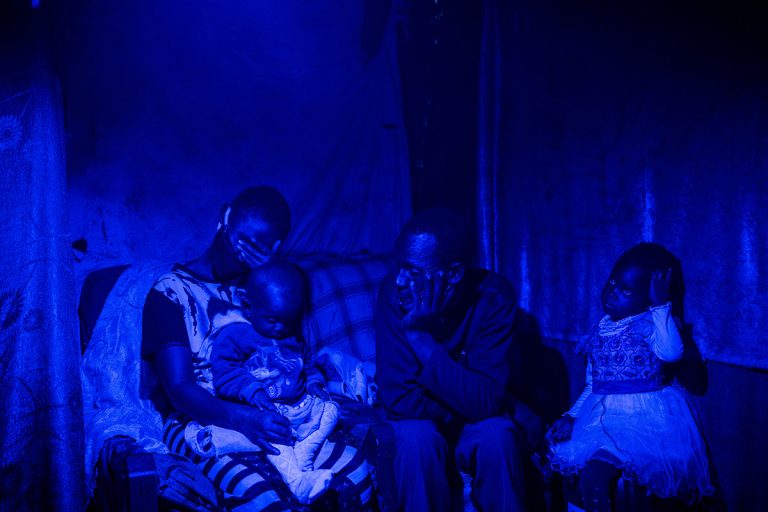For National Geographic’s November 2020 issue, photographers in five countries, including VII’s Nichole Sobecki in Kenya, show how COVID-19 became a painful, shared experience around the globe.
In the photo above, Regina Wambui (35), Lucy Wanjiru (1), Patrick Mwangi (35), and Peace Wanjiru (5), are in the storage room a friend loaned them for temporary shelter after their family was forcibly evicted from their home in the neighborhood of Sewage, an area of the Kariobangi settlement in Nairobi that was razed by the city government, on June 9, 2020. Kenyan authorities forcibly evicted more than 7,000 people from the neighborhood known as Sewage, for an adjacent treatment plant, this past April, defying a court order and leaving many stranded and homeless in the midst of the pandemic. Before the eviction Patrick worked selling samosas at a stand near their home, but both their stall, their clientele, and all of their equipment was destroyed in the eviction, leaving them both homeless and unemployed.
Kenya’s capital is an obscenely unequal city, where the rich, who are few, lead gilded lives and the poor, who are many, face daily punishment for their poverty: slum demolitions, police brutality, corrupt politics and the diseases that spread because of the city’s failure to provide clean water. The demolitions have also fueled a belief that coronavirus is a fiction created to exploit them, with many arguing that the government wouldn’t force thousands into homelessness if the virus were real and social distancing and hygiene critical to staying safe.
